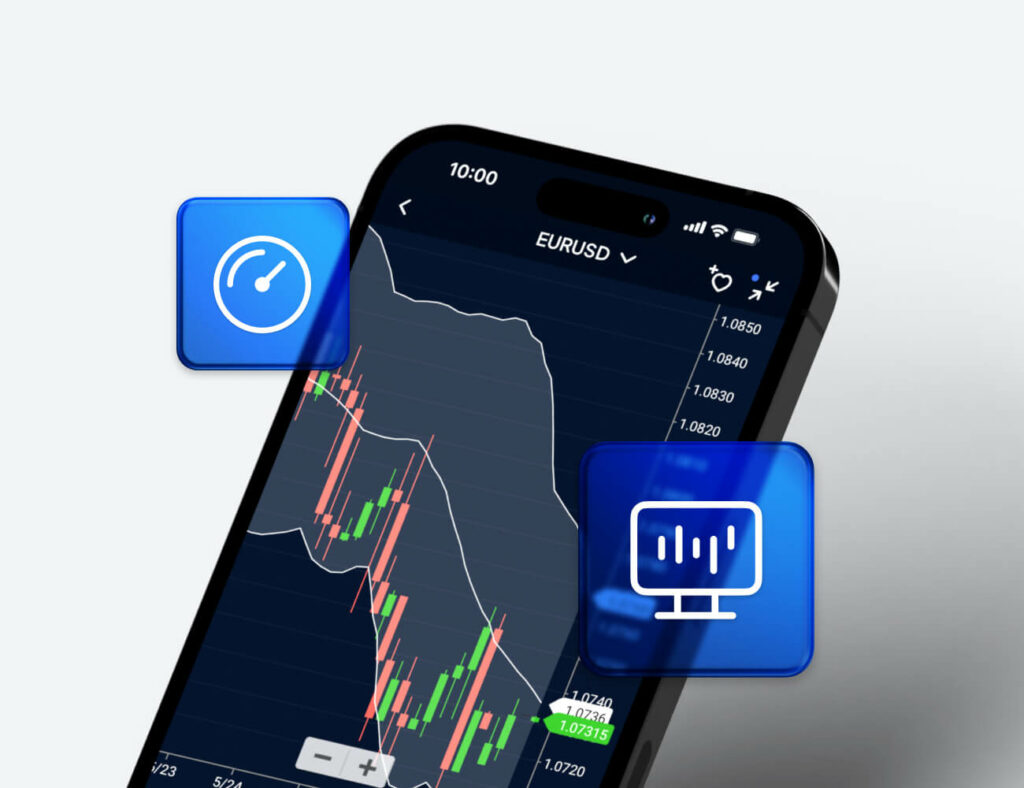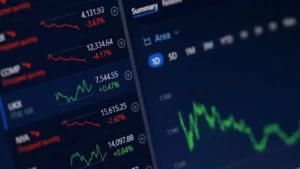New traders often start with a single market, such as forex or stocks. However, many soon realize that relying on one asset type limits growth and risk control. Multi-asset trading platforms simplify access to various markets — allowing a single account to handle currencies, commodities, indices, and equities together. This approach helps traders balance volatility, hedge positions, and explore multiple strategies without switching between brokers or systems.
Understanding Multi-Asset Trading
Multi-asset trading refers to using one account to trade several asset types, such as currencies, shares, metals, energy products, and derivatives. Instead of opening different accounts across brokers, traders can execute orders, manage exposure, and analyze charts in a unified interface.
Modern trading platforms integrate multiple markets using advanced liquidity feeds and real-time pricing. Orders can be placed across asset classes using similar tools — such as limit, stop, or market orders — which simplifies portfolio control for newcomers.
A key element is the ability to view all open positions together. For example, a trader may hold a long position in gold while shorting a major currency pair. Both positions appear on the same dashboard, making exposure easier to monitor.

Key Benefits of Multi-Asset Trading
Multi-asset systems are not only convenient but also strategic. They help beginners explore markets gradually, using small allocations to understand volatility and correlation between instruments.
Access to Different Markets in One Account
Instead of logging into separate terminals for stocks, commodities, and forex, traders can manage everything from one screen. This saves time and improves order execution.
| Feature | Single-Market Account | Multi-Asset Account |
| Number of tradable markets | One | Multiple |
| Order management | Separate systems | Centralized dashboard |
| Data feed | Limited | Unified and real-time |
| Risk tracking | Fragmented | Consolidated view |
Unified systems also allow easy transfer of margin between markets. For instance, unused margin from a forex position can serve as collateral for an equity CFD trade — improving capital efficiency.
Easier Portfolio Diversification for New Traders
Diversification reduces exposure to single-market shocks. If the stock market declines, positions in commodities or currencies can offset potential losses. This principle is particularly useful for beginners who are still forming their risk tolerance.
| Asset Type | Typical Volatility | Common Purpose |
| Forex | Medium | Short-term speculation |
| Stocks/ETFs | Variable | Long-term growth |
| Commodities | High | Inflation hedge |
| Indices | Moderate | Market sentiment exposure |
Beginners can start small — for example, allocating 40% to forex pairs, 40% to ETFs, and 20% to commodities. Adjusting this ratio over time helps develop a balanced trading style.
Popular Asset Classes for Beginners
Every market follows its own rhythm, liquidity pattern, and trading costs. A solid understanding of the most accessible asset groups helps newcomers choose instruments that fit their strategy.

Forex and Its Accessibility
Foreign exchange remains the most popular entry point due to low minimum deposits, 24-hour availability, and high liquidity. Spreads are often tight, and technical tools such as moving averages or Fibonacci retracements work well across major pairs.
Beginners should focus on majors like EUR/USD or USD/JPY before experimenting with exotic currencies, which carry higher volatility and wider spreads.
Stocks and ETFs for Long-Term Strategies
Stocks and exchange-traded funds (ETFs) appeal to traders who prefer gradual portfolio growth. Many multi-asset systems allow buying fractional shares, making diversification easier with limited capital.
ETFs covering technology, healthcare, or energy sectors can balance risks without requiring stock-picking expertise. They also simplify dividend reinvestment and index tracking.
Commodities and Indices for Broader Exposure
Commodities such as oil, gold, or agricultural products provide exposure to macroeconomic cycles. Indices — like the S&P 500 or FTSE 100 — reflect overall market sentiment, which helps traders interpret global trends rather than single-company behavior.
Both asset classes require attention to external factors. For example:
- Oil reacts strongly to OPEC decisions and geopolitical tensions.
- Gold often moves inversely to the U.S. dollar.
- Agricultural contracts fluctuate based on weather forecasts.
These relationships make commodities and indices effective tools for learning inter-market dynamics.
How to Choose a Reliable Multi-Asset Platform
Selecting the right multi-asset trading platform can determine how efficiently trades are executed and how easily portfolios are managed. Beginners should evaluate several core aspects before depositing funds.
1. Regulation and Security
Always verify that the provider is licensed by a reputable financial authority such as the FCA (UK), CySEC (Cyprus), or ASIC (Australia). Regulated brokers must segregate client funds from company accounts and maintain transparent reporting. This reduces counterparty risk and helps protect deposits in case of disputes or insolvency.
2. Range of Tradable Assets
A true multi-asset environment should offer more than just forex and CFDs. The broader the selection — including equities, ETFs, commodities, and indices — the easier it is to build a balanced portfolio.
Some platforms also provide access to bond CFDs or cryptocurrencies, but beginners are better off starting with traditional markets where pricing structures and liquidity are more stable.
3. Order Execution and Spreads
Execution speed and pricing accuracy are essential. Even small delays or requotes can change outcomes, especially in volatile markets. ECN or STP execution models are generally preferred because they route orders directly to liquidity providers.
Low spreads, minimal slippage, and transparent commission structures create a fairer trading environment for new traders still learning position sizing and timing.
4. Analytical Tools and User Interface
A clean interface combined with reliable charting tools allows traders to focus on market analysis instead of platform navigation.
Key features to check include:
- Integrated economic calendar;
- Multi-chart view;
- Risk-to-reward calculator;
- Customizable indicators and scripts.
Mobile versions should mirror desktop functions to monitor trades on the go without sacrificing chart precision.
5. Customer Service and Education
While the platform shouldn’t be marketed through promises of support, reliable service channels still matter. Email, live chat, and FAQ databases help resolve technical issues faster. Educational material — such as webinars or trading glossaries — adds value, especially for beginners developing their first strategies.
| Evaluation Factor | What to Check | Why It Matters |
| Regulation | License number and authority | Confirms legitimacy |
| Assets | Range beyond forex | Promotes diversification |
| Execution | ECN/STP access | Reduces slippage |
| Interface | Tools and usability | Simplifies analysis |
| Support | Availability and response | Aids troubleshooting |
Practical Steps to Start Multi-Asset Trading
Starting is not complicated once the correct setup steps are followed. The process can be divided into three main stages.
Account Setup and Verification
After selecting a broker, the first step involves completing registration and identity verification. This usually requires:
- Government-issued ID (passport or national ID);
- Proof of address (utility bill or bank statement).
Verification ensures compliance with anti-money-laundering (AML) rules and unlocks full account functionality, including withdrawals.
Traders should also choose the account type that matches their approach — standard for smaller positions or professional for higher leverage and tighter spreads.
Funding Options and Deposit Methods
Most platforms accept:
- Bank transfers;
- Debit or credit cards;
- E-wallets such as Skrill or Neteller.
Processing time and transaction costs differ depending on the method. Bank transfers may take up to three days, while e-wallet deposits usually appear instantly. Always check whether withdrawals must use the same channel as deposits — this is a common compliance rule to prevent fraud.
| Payment Method | Typical Processing Time | Average Fee |
| Bank transfer | 1–3 business days | 0–1% |
| Card payment | Instant | 0–2% |
| E-wallet | Instant | 0–1% |
Setting Risk Limits and Stop Orders
Before opening trades, beginners should define a clear risk framework. Limiting exposure per trade prevents emotional decisions and protects capital during volatile sessions.
Three essential settings include:
- Stop-Loss: closes the trade automatically when losses reach a set threshold.
- Take-Profit: locks in profits once the target level is reached.
- Trailing Stop: adjusts automatically as price moves favorably, securing gains while keeping trades open.
Combining these tools with a consistent position-sizing method (e.g., risking 1–2% of account equity per trade) helps maintain discipline and avoid large drawdowns.
Common Mistakes Beginners Should Avoid
Even with a solid platform, many new traders fall into repetitive errors that slow progress or deplete capital. Awareness of these pitfalls reduces the learning curve.
Overtrading and Lack of a Plan
Opening multiple positions without a clear strategy often leads to inconsistent outcomes. Traders might react emotionally to short-term price moves or attempt to recover previous losses through impulsive entries.
Creating a written plan with defined entry rules, exit points, and maximum daily trades encourages consistency and data-based decisions.
Simple tracking through a trading journal can highlight recurring errors and help refine future strategies.
Ignoring Risk Management
Many beginners focus on profit targets while neglecting loss control. Without stop-loss orders or proper leverage management, a few bad trades can erase previous gains.
Risk control involves:
- Using leverage moderately;
- Avoiding position overlap between correlated assets;
- Keeping cash reserves for margin calls.
As skills improve, risk parameters can be adjusted, but they should never be removed entirely. Professional traders treat capital preservation as the first goal, with returns coming second.
Frequently Asked Questions
What is the main advantage of a multi-asset trading account?
It allows access to multiple markets — forex, stocks, commodities, and indices — under a single login. This simplifies portfolio management and improves capital allocation efficiency.


